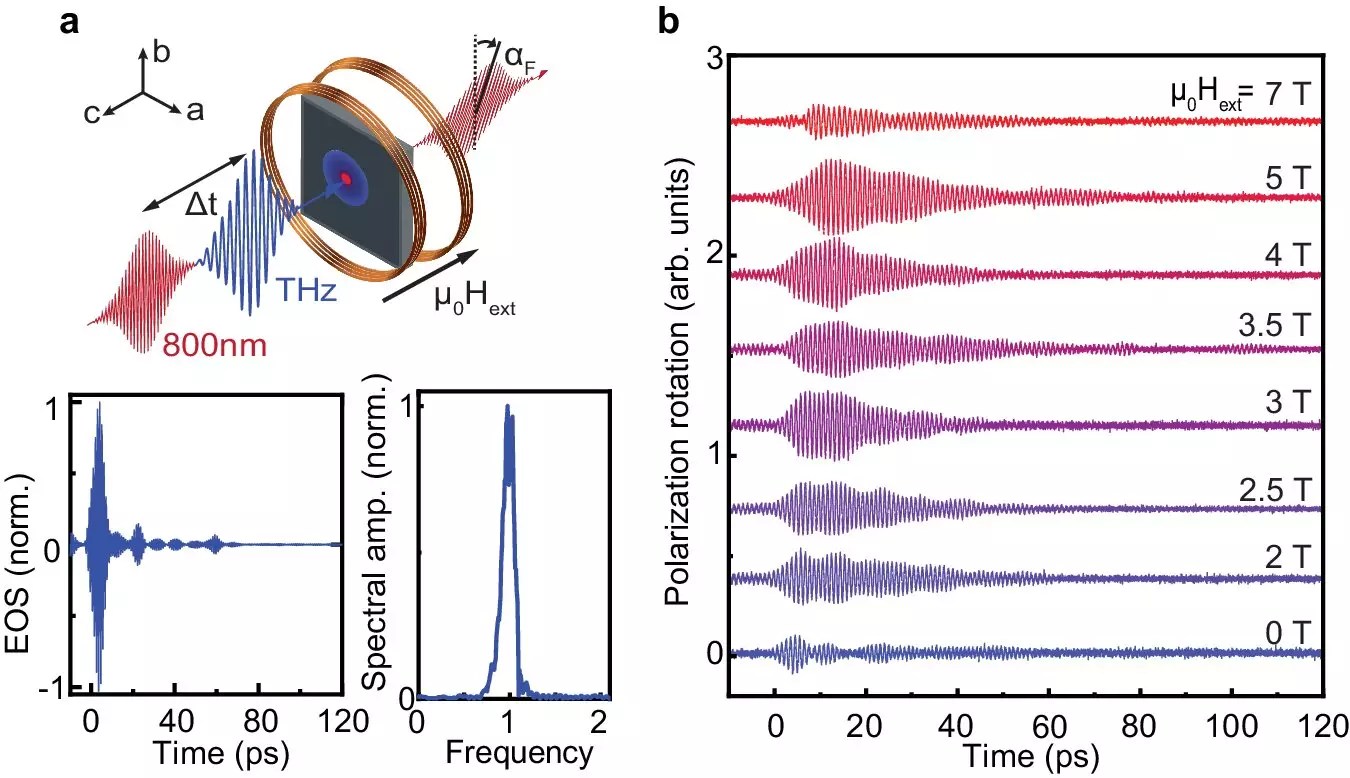As our world becomes increasingly digitized, the energy consumption of data storage centers is set to escalate alarmingly, potentially swallowing up to 10% of global energy output. This worrying trend is driven by the inherent limitations of traditional materials used in data storage—namely, ferromagnets. The quest for solutions has stirred a vibrant dialogue within the scientific community, focusing on the promise of antiferromagnetic materials. Unlike their ferromagnetic counterparts, these innovative materials not only offer a glimpse of greater efficiency but also propose remarkable improvements in speed, with operations potentially accelerating to 1,000 times faster.
The transition from ferromagnets to antiferromagnets marks a pivotal shift that could transform how we engage with technology. As data storage becomes a heavier burden on our finite energy resources, the responsibility falls on scientists to explore new materials that can mitigate this impending crisis.
Unlocking Quantum Properties: Antiferromagnets to the Rescue
Antiferromagnets stand out due to their unique spin arrangements, where neighboring magnetic moments are oriented in opposite directions. This antiparallel alignment is not merely a fascinating peculiarity; it allows for unprecedented spin dynamics that outclass conventional materials. The magic lies in the interplay between spins and the crystal lattice of these materials, crucial for advancing spintronics—an area of research dedicated to using electron spins instead of charge to carry information.
This concept of spin waves, which operate on the basis of magnons—quasiparticles representing collective spin excitations—offers an innovative route to convey information without the thermal issues associated with electron currents. With this exciting paradigm shift, researchers are now honing in on cobalt difluoride (CoF2), a notable antiferromagnetic material where these fascinating interactions can thrive.
The Game-Changer: Coupling Spins and Lattice Vibrations
Recent research dives deeper into the interplay of magnons and phonons within CoF2. The work sheds light on a synergy between these two quasiparticles, revealing a strong coupling that has never been observed before in the context of antiferromagnetic materials. The significance of this finding cannot be overstated—the new regime of coupled magnon-phonon dynamics presents an energy transfer method that could redefine our understanding of material science.
Through leveraging terahertz frequencies, researchers excited the spin dynamics in CoF2, expertly tuning the system to meet Fermi resonance conditions. This resonance, initially identified in carbon dioxide nearly a century ago, evokes a deeper connection between vibrational states at the atomic level, unlocking new layers of complexity in material interactions. By establishing this strong coupling, scientists can potentially manipulate electrical properties to unlock more energy-efficient applications.
Facilitating High-Speed Data Writing
The implications of this research are vast and vital to the advancement of data storage technology. By establishing conditions that allow efficient energy exchange between magnons and phonons, researchers are poised to dramatically increase operational frequencies from conventional gigahertz to the terahertz range. Such speeds are not just numbers; they represent a future where data can flow more freely and efficiently.
This transformative capability could fundamentally change how data is written within storage systems, leading to reduced energy requirements for these processes. As the world grapples with the overarching challenges of climate change and energy sustainability, this shift to antiferromagnetic materials could become a cornerstone of a new technological ecosystem that minimizes energy consumption.
The Future of Materials Science: Expanding Possibilities
Looking ahead, the research team is excited to expand the exploration of Fermi resonance beyond CoF2 to include a variety of novel quantum materials. This opens up a vast field of possibilities, where manipulating spin-lattice coupling could unlock new, energy-efficient technologies that bridge the gap between quantum physics and practical application.
The notion that we could one day control properties at this quantum level revives a long-standing dream within materials science—a dream of crafting materials that are not only advanced but radically different from what we have today. The journey towards harnessing antiferromagnetism for efficient data storage systems may just be the beginning of a profound transformation in how we leverage materials to meet the growing demands of a digital world.
By aggressively pursuing this research, scientists are not only addressing the imminent energy crisis posed by data storage but are carving out a progressive future that reimagines the possibilities of technology, sustainability, and innovation all at once.


Leave a Reply